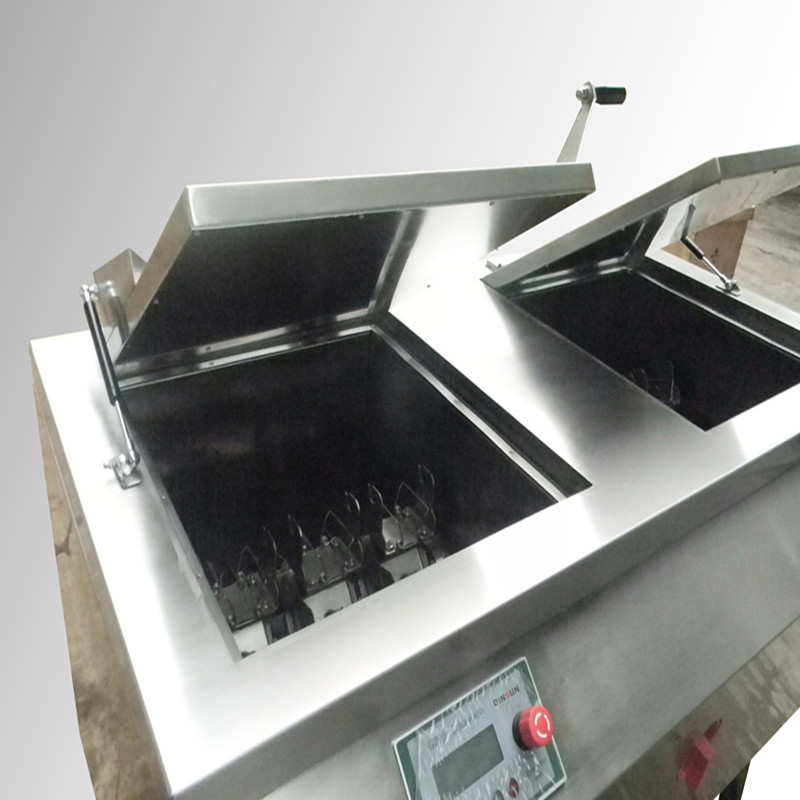
NewsInformation Center
Washing color fastness tester testing process - essential knowledge
2022/12/20
Washing color fastness tester is the test equipment developed and produced by Standard International Group (HK) Limited, with high cost performance and complete after-sales service. It is used to test the color change of colored fabrics after washing in solution, in order to detect the color fastness of fabrics after washing.
The main parameters:
1. Working temperature: up to 100±2 degrees Celsius;
2. Rotation speed: 40±2r/min;
3. Test cup size: (national standard) 550ml, (American standard) 1200ml;
4. Timing range: 1~999min;
5. Setting temperature range: room temperature to 99°C;
6. Temperature control fluctuation: <±1°C;
7. Quantity of test cups: (National Standard) 20, (American Standard) 10.

standard test:
ISO105-C01-C05-1989 "Tests for Color Fastness of Textiles Color Fastness to Washing: Test 1-Test 5"
EN20105C01-C05-1992 "Textiles Color Fastness Test Color Fastness to Washing: Test 1-Test 5"
DINEN20105C01-C05-1993 "Textiles Color Fastness Test Color Fastness to Washing: Test 1-Test 5"
AATCC172-2002 Color fastness to household washing anaerobic bleaching"
GB/T3921.1-5-1997 "Textiles Color Fastness Test Color Fastness to Washing: Test 1-Test 5".
Test experiment:
1. Put the combined sample into a specified airtight container, and put the washing test solution in the container with a mass ratio of 50:1 to the combined sample;
2. Rotate the sealed container along a radius of 45mm and a speed of 40r/min, and perform mechanical stirring at the specified temperature and time;
3. Take out the sample at the end of the test, wash it twice with cold third-grade water, then rinse it in running cold water for 10 minutes, and squeeze out the water;
4. Unfold the combined sample so that the sample and the lining are only connected by a suture, and hang it in an environment not higher than 60°C to dry;
5. Use the gray sample card for discoloration to evaluate the discoloration of the sample, and use the gray sample card for staining to evaluate the staining of the lining fabric.
Previous: Determination of tensile properties of textile fabrics
N e x t : Anti-virus textiles in China draw attention - future development is worth lookin



